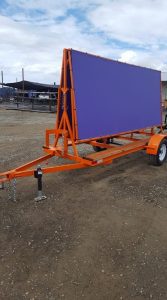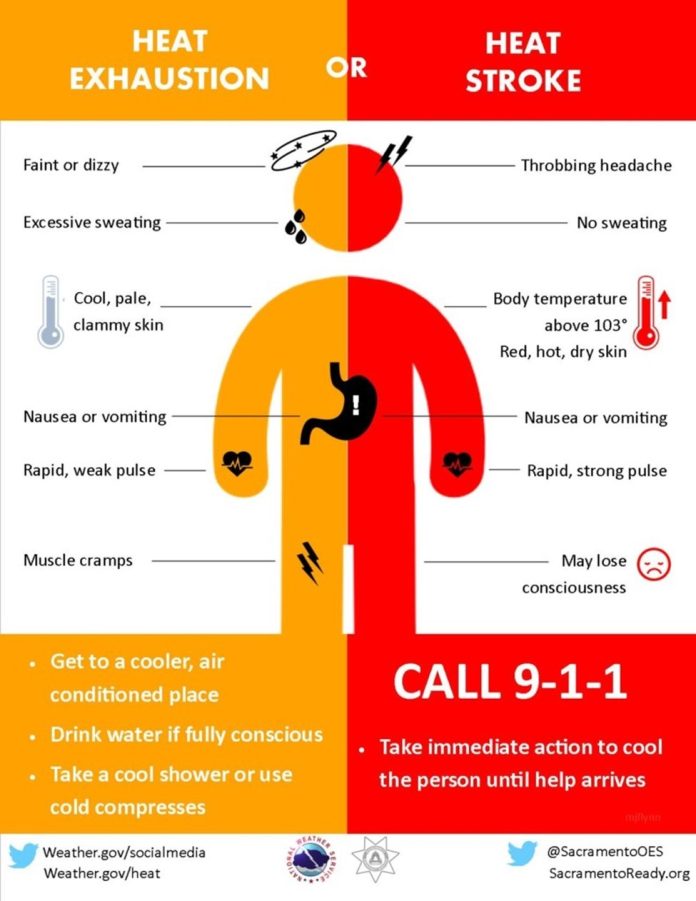As temperatures continue to rise in the Central Valley, it is important for growers to understand not only the precautions they should take to keep employees safe while working in the heat but also the elements of regulatory compliance related to heat illness prevention. The Almond Board of California has partnered with AgSafe, a leader in practical health and safety education to the agricultural community, to help growers and their hired labor get through harvest successfully and safely.
According to the California Division of Occupational Safety and Health (Cal/OSHA), the most frequently cited violations in agriculture under the Heat Illness Prevention Standard are 1) failure to have a Heat Illness Prevention Plan in the field; 2) a lack of heat illness prevention training; and 3) a failure to provide adequate shade and water.
In order to ensure compliance and avoid regulatory discipline, AgSafe has provided a guidance on what a prevention plan and trainings should look like in addition to what qualifies as “adequate shade and water.”
Heat Illness Prevention Plan: What Must It Include?
A grower or company’s written Heat Illness Prevention Plan must include the following elements as well as specific details as to how that entity will ensure each provision is met:
- the designated person(s) that have the authority and responsibility for implementing the plan in the orchard;
- procedures for providing sufficient water;
- procedures for providing access to shade;
- high heat procedures;
- emergency response procedures (don’t forget your lone workers such as irrigators); and
acclimatization methods and procedures.
When drafting your plan, it is important to consider the size of your crew, the length of the workday, the ambient temperatures and any additional personal protective equipment (PPE) that contributes as an additional source of heat. The plan needs to be provided in English and the language understood by the majority of the employees (if other than English.) Finally, the plan must be located at the worksite and easily accessible to employees.

The Ins and Outs of Heat Illness Prevention Training
Employee training needs to be conducted before an employee begins a shift that could result in the risk of heat illness. Each training should cover the following:
- the environmental and personal risk factors associated with heat illness as well as the added burden of heat load on the body caused by exertion, clothing and personal protective equipment;
- the employer’s procedures for complying with the plan’s elements including the employer’s responsibility to provide water, shade, cool-down rests and access to first aid as well as the employees’ right to exercise their rights;
- the importance of frequent consumption of small quantities of water throughout the workday;
- the concept, importance and methods of acclimatization;
- the different types of heat illness, common signs and symptoms, and appropriate first aid and emergency responses to the different types of heat illness (must also mention that heat illness may progress quickly from mild symptoms to serious and life-threatening illness);
- the importance of immediately reporting to the employer (directly or through the employee’s supervisor) signs or symptoms of heat illness experienced by an employee or his/her co-worker/s;
- the employer’s procedures for responding to signs or symptoms of possible heat illness, including how emergency medical services will be provided should they become necessary;
- the employer’s procedures for contacting emergency medical services and, when necessary, transporting employees to a location where they can be reached by an emergency medical service provider; and
- the employer’s procedures for ensuring that, in the event of an emergency, clear and precise directions to the work site can and will be provided as needed to emergency responders. These procedures should include designating a person to be available to ensure that emergency procedures are initiated when appropriate.
Beyond just employee trainings, supervisor trainings need to be completed prior to supervising employees and include the following topics:
- all of the topics covered during employee training (listed above);
- the procedures the supervisor is to follow to implement the heat illness prevention plan procedures;
- the protocol a supervisor is to follow when an employee exhibits signs or reports symptoms consistent with possible heat illness, including emergency response procedures;
- and how to monitor weather reports and how to respond to hot weather advisories.
It’s important for shift supervisors and employers to educate employees on a variety of heat safety matters, including the difference between heat exhaustion and heat stroke as explained above.
Defining ‘Adequate Shade and Water’
Shade
“Adequate shade” essentially means blockage of direct sunlight. One indicator that blockage is sufficient is when objects do not cast a shadow in the area of blocked sunlight. Shade is not adequate when heat in the area of shade defeats the purpose of shade, which is to allow the body to cool. For example, a car sitting in the sun does not provide acceptable shade to a person inside it unless the car is running with air conditioning. Shade may be provided by any natural or artificial means that do not expose employees to unsafe or unhealthy conditions and do not deter or discourage access or use.
Employers need to ensure shade is available for employees once the temperature exceeds 80 degrees F. To accurately determine when it surpasses 80 degrees F, Cal/OSHA urges employers to not rely on their cell phones because it does not reflect site-specific temperatures. Instead, the best practice is to invest in and use an outdoor thermometer daily.
The amount of shade present should be at least enough to accommodate the number of employees on recovery or taking rest periods so that they can sit in a normal posture fully in the shade without having to be in physical contact with each other. The shade should be located as close as practicable to the areas where employees are working. Further, shade needs to be available, even when the temperature does not exceed 80 degrees F, upon employee request.
According to state regulations, the amount of shade made available to employees must be, at minimum, able to accommodate the number of employees on recovery or rest periods so that they can sit in a normal posture fully covered by the shade without having to be in physical contact with each other.
Water
Employees should always have access to potable drinking water that is fresh, pure, suitably cool and provided free of charge. The water should be located as close as practicable to the areas where employees are working. Where drinking water is not plumbed or otherwise continuously supplied, it shall be provided in a sufficient quantity at the beginning of the work shift to provide one quart per employee per hour for drinking during the entire shift. Employers are permitted to provide smaller quantities of water at the beginning of the shift if they have effective procedures in place to replenish the water during the shift, as needed, to allow employees to drink at least one quart or more per hour.
For more information about heat illness prevention, worker safety, human resources, labor relations, and pesticide compliance, please visit www.agsafe.org or contact us at (209) 526-4400 or via email at safeinfo@agsafe.org.
AgSafe is a 501c3 nonprofit providing training, education, outreach and tools in the areas of worker safety, human resources, labor relations and pesticide compliance for the food and farming industries. Since 1991, AgSafe has educated nearly 1000,000 employers, supervisors and workers on these critical issues.
















